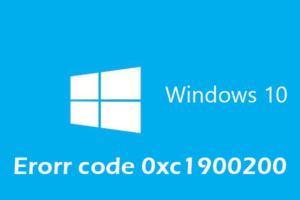-
Table of Contents
- Implications of Microsoft’s decision to remove 44 Intel CPUs from Windows 11’s Processor Compatibility list
- Understanding the reasons behind Microsoft’s exclusion of 44 Intel CPUs from Windows 11
- Exploring alternative options for users with Intel CPUs not supported by Windows 11
- Analyzing the potential impact on Intel’s market position due to Windows 11’s CPU compatibility changes
- Q&A
“Windows 11: Streamlined for the future, with enhanced processor compatibility.”
Microsoft has recently made an announcement regarding the removal of 44 Intel CPUs from Windows 11’s Processor Compatibility list.
Implications of Microsoft’s decision to remove 44 Intel CPUs from Windows 11’s Processor Compatibility list
Microsoft’s recent decision to remove 44 Intel CPUs from Windows 11’s Processor Compatibility list has sent shockwaves through the tech industry. This move has significant implications for both consumers and Intel, as it raises questions about the future of compatibility and support for older processors.
One of the immediate implications of this decision is that users with these older Intel CPUs will not be able to upgrade to Windows 11. This means that those who were eagerly anticipating the new operating system will now have to either stick with their current version of Windows or invest in a new processor that is compatible with Windows 11. This could potentially lead to a surge in sales for Intel’s newer processors, as users scramble to meet the new requirements.
However, this decision also raises concerns about the longevity of support for older hardware. By removing these CPUs from the compatibility list, Microsoft is essentially signaling that it is moving towards a more streamlined and modern ecosystem. While this may be seen as a positive step in terms of performance and security, it also means that users with older hardware may be left behind.
This move by Microsoft could also have implications for Intel’s reputation and market share. Intel has long been the dominant player in the CPU market, but this decision could potentially push some users towards rival AMD, whose processors are still supported by Windows 11. This could lead to a shift in the balance of power in the CPU market, as users seek out alternatives that are compatible with the latest operating system.
Furthermore, this decision highlights the challenges faced by both Microsoft and Intel in balancing compatibility with innovation. On one hand, Microsoft wants to push the boundaries of what is possible with its operating system, and this often requires dropping support for older hardware. On the other hand, Intel wants to ensure that its processors remain relevant and in demand, and being excluded from Windows 11’s compatibility list could be a blow to its reputation.
It is worth noting that Microsoft has stated that the removal of these CPUs from the compatibility list is due to compatibility and reliability concerns. The company wants to ensure that users have the best possible experience with Windows 11, and this means focusing on newer hardware that is better equipped to handle the demands of the operating system. While this may be a valid reason, it does little to ease the concerns of users who are now left with unsupported hardware.
In conclusion, Microsoft’s decision to remove 44 Intel CPUs from Windows 11’s Processor Compatibility list has far-reaching implications for both consumers and Intel. It raises questions about the future of compatibility and support for older processors, and could potentially lead to a shift in the CPU market. While Microsoft’s focus on performance and security is commendable, it also highlights the challenges faced by both Microsoft and Intel in balancing compatibility with innovation. Ultimately, it remains to be seen how this decision will play out in the long term, but it is clear that it has sparked a significant debate within the tech industry.
Understanding the reasons behind Microsoft’s exclusion of 44 Intel CPUs from Windows 11
Microsoft recently announced that it will be removing 44 Intel CPUs from the list of processors compatible with its upcoming operating system, Windows 11. This decision has raised eyebrows and sparked discussions among tech enthusiasts and industry experts. Understanding the reasons behind Microsoft’s exclusion of these CPUs is crucial in comprehending the implications it may have on users and the overall market.
One of the primary reasons for this exclusion is Microsoft’s focus on security and performance enhancements in Windows 11. The company aims to provide a more secure and efficient operating system, optimized for modern hardware. By removing older CPUs from the compatibility list, Microsoft can ensure that Windows 11 takes full advantage of the latest advancements in processor technology. This move aligns with Microsoft’s commitment to delivering a cutting-edge user experience and staying at the forefront of technological innovation.
Another factor contributing to this decision is the need to streamline the development and support process for Windows 11. With a vast array of CPUs available in the market, maintaining compatibility with every single one can be a daunting task. By narrowing down the list of supported processors, Microsoft can allocate its resources more effectively, focusing on optimizing the operating system for a select range of CPUs. This approach allows for better quality control and faster updates, ultimately benefiting users with improved stability and performance.
It is worth noting that the excluded CPUs are predominantly older models that may not meet the minimum requirements for Windows 11. These processors lack certain features, such as TPM 2.0 (Trusted Platform Module) and Secure Boot, which are essential for enhanced security measures in the new operating system. Microsoft’s decision to exclude these CPUs is a strategic move to ensure that Windows 11 operates on hardware that meets the necessary security standards.
While some users may be disappointed by this news, it is important to understand that technology evolves rapidly, and older hardware eventually becomes outdated. Microsoft’s decision to remove these CPUs from the compatibility list is a natural progression in the tech industry. It encourages users to upgrade their hardware to experience the full potential of Windows 11 and benefit from the latest advancements in security and performance.
Furthermore, this move by Microsoft may also have implications for the market as a whole. It could potentially drive sales of newer CPUs as users seek to upgrade their systems to meet the requirements of Windows 11. This increased demand for modern processors could benefit hardware manufacturers, stimulating innovation and competition in the market. Additionally, it may encourage users to invest in more secure and efficient hardware, ultimately leading to a safer computing environment for everyone.
In conclusion, Microsoft’s decision to remove 44 Intel CPUs from the compatibility list for Windows 11 is driven by a focus on security, performance enhancements, and streamlining development and support processes. By excluding older processors, Microsoft can optimize the operating system for modern hardware, ensuring a more secure and efficient user experience. While this decision may disappoint some users, it reflects the natural progression of technology and encourages hardware upgrades. Moreover, it may have positive implications for the market, driving sales of newer CPUs and fostering innovation. As Windows 11 approaches its release, it will be interesting to see how this decision shapes the future of computing.
Exploring alternative options for users with Intel CPUs not supported by Windows 11
Microsoft recently announced that it will be removing 44 Intel CPUs from the list of processors compatible with its upcoming operating system, Windows 11. This decision has left many users with older Intel CPUs wondering what their options are moving forward. In this article, we will explore some alternative options for users who find themselves in this situation.
First and foremost, it is important to understand why Microsoft made this decision. Windows 11 introduces a new set of system requirements that focus on security, performance, and compatibility. These requirements include features such as TPM 2.0, Secure Boot, and a minimum processor generation. Microsoft has stated that these requirements are necessary to ensure a more secure and reliable operating system.
For users with Intel CPUs that are no longer supported by Windows 11, one option is to stick with their current operating system, such as Windows 10. Microsoft has committed to providing support and updates for Windows 10 until October 14, 2025. This means that users can continue using their current setup without any immediate concerns about security or compatibility.
Another option for users with unsupported Intel CPUs is to consider upgrading their hardware. While this may not be the most cost-effective solution, it does offer the benefit of being able to take advantage of the new features and improvements that Windows 11 has to offer. Upgrading to a newer generation Intel CPU that is supported by Windows 11 will ensure compatibility and provide a smoother experience overall.
Alternatively, users can also explore the option of switching to a different operating system altogether. Linux distributions, such as Ubuntu or Fedora, offer a free and open-source alternative to Windows. These operating systems have a wide range of software available and can be customized to suit individual needs. However, it is important to note that switching to a different operating system may require some adjustment and learning curve for users who are accustomed to Windows.
For users who rely heavily on Windows-specific software or prefer to stick with the Windows ecosystem, another option is to consider virtualization. Virtualization software, such as VMware or VirtualBox, allows users to run multiple operating systems simultaneously on a single machine. By creating a virtual machine with a supported operating system, users can continue using their current hardware while also being able to run Windows 11 in a virtual environment.
Lastly, it is worth mentioning that Microsoft’s decision to remove these Intel CPUs from the compatibility list does not necessarily mean that Windows 11 will not work on them. While these CPUs may not meet the minimum requirements set by Microsoft, it is possible that they can still run Windows 11 with some limitations or performance trade-offs. However, it is important to note that using an unsupported CPU may result in a less stable or secure system.
In conclusion, users with Intel CPUs that are not supported by Windows 11 have several alternative options to consider. They can stick with their current operating system, upgrade their hardware, switch to a different operating system, explore virtualization, or potentially run Windows 11 with some limitations. Each option has its own pros and cons, and users should carefully evaluate their needs and preferences before making a decision. Ultimately, the goal is to find a solution that provides a secure and reliable computing experience.
Analyzing the potential impact on Intel’s market position due to Windows 11’s CPU compatibility changes
Microsoft recently announced that it will be removing 44 Intel CPUs from the list of processors compatible with its upcoming operating system, Windows 11. This decision has raised concerns about the potential impact on Intel’s market position and the overall implications for the tech industry.
The move by Microsoft to exclude these Intel CPUs from Windows 11’s compatibility list is significant. It means that users with older Intel processors will not be able to upgrade to the latest operating system. This decision has sparked a debate about the reasons behind Microsoft’s move and the potential consequences for Intel.
One possible explanation for Microsoft’s decision is the need to ensure optimal performance and security for Windows 11 users. By narrowing down the list of compatible processors, Microsoft can focus on optimizing the operating system for newer CPUs that offer better performance and security features. This move aligns with Microsoft’s commitment to delivering a seamless and secure user experience.
However, this decision could have a significant impact on Intel’s market position. Intel has long been a dominant player in the CPU market, and its processors have been widely used in personal computers. With Microsoft excluding older Intel CPUs from Windows 11, it could lead to a decline in demand for these processors. This could potentially open up opportunities for competitors, such as AMD, to gain market share.
The exclusion of these Intel CPUs from Windows 11’s compatibility list also raises questions about the future of backward compatibility in the tech industry. Backward compatibility has been a crucial aspect of software development, allowing users to upgrade their operating systems without having to replace their hardware. However, Microsoft’s decision to remove these CPUs suggests a shift towards prioritizing performance and security over backward compatibility.
This move by Microsoft could also have broader implications for the tech industry as a whole. It could encourage other software developers to follow suit and exclude older processors from their compatibility lists. This could lead to a faster obsolescence of older hardware and a more rapid pace of technological advancement.
On the other hand, this decision by Microsoft could also be seen as a necessary step to drive innovation and push the industry forward. By focusing on optimizing Windows 11 for newer CPUs, Microsoft can take advantage of the latest technological advancements and deliver a more advanced operating system. This could ultimately benefit consumers who are looking for improved performance and security in their computing experience.
In conclusion, Microsoft’s decision to remove 44 Intel CPUs from Windows 11’s compatibility list has significant implications for Intel’s market position and the tech industry as a whole. While it may lead to a decline in demand for older Intel processors, it also signals a shift towards prioritizing performance and security over backward compatibility. This move could encourage other software developers to follow suit and drive innovation in the industry. Ultimately, the impact of this decision will depend on how consumers and competitors respond to these changes.
Q&A
1. Why did Microsoft remove 44 Intel CPUs from Windows 11’s Processor Compatibility list?
Microsoft removed these CPUs due to compatibility and performance concerns.
2. How many Intel CPUs were removed from Windows 11’s Processor Compatibility list?
44 Intel CPUs were removed from the list.
3. What is the reason behind the removal of these CPUs?
The removal was based on compatibility and performance issues.
4. Is there any alternative solution for users with these CPUs?
Users with these CPUs can continue using Windows 10 or consider upgrading their hardware to meet Windows 11’s requirements.In conclusion, Microsoft has removed 44 Intel CPUs from Windows 11’s Processor Compatibility list.







![[Solved]: “Error Code 0xC004F050” in Windows 11 in No Time](https://www.tipsbin.net/wp-content/uploads/2023/08/8e64f519d2390bfc001a41744be2cbd4-300x199.jpeg)

